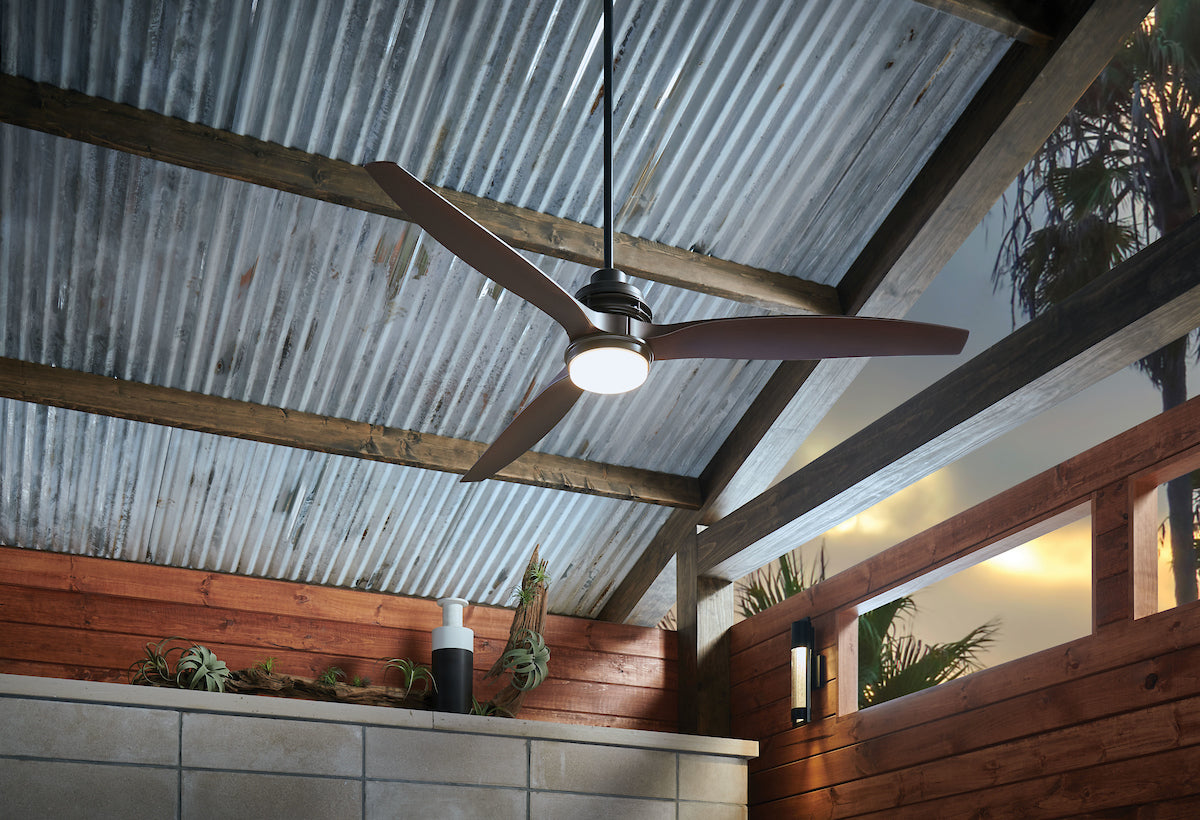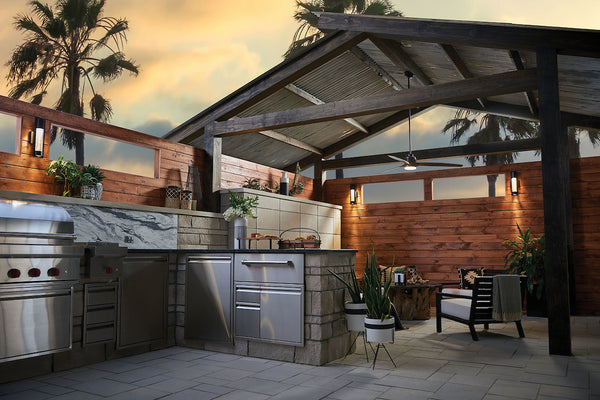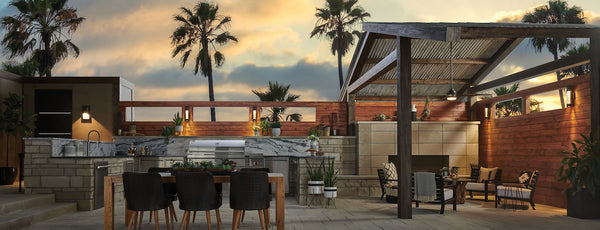On orders $99+
On orders $99+

To determine the correct size outdoor ceiling fan for your space, start by measuring the square footage of the area you wish to cool. Fans are sized by their blade span, which correlates to the fan's diameter. For areas up to 75 square feet, a fan with a diameter of 29-36 inches is suitable. For spaces between 76-144 square feet, select a fan ranging from 36-42 inches. Larger areas, up to 225 square feet, require a fan of 44-50 inches, and for spaces greater than 225 square feet, fans larger than 50 inches are recommended. Additionally, consider the fan's placement and the height of your ceiling to ensure optimal air circulation and aesthetic fit, keeping in mind that the fan should hang at least 8 to 9 feet off the ground for safety and comfort. This approach ensures your outdoor fan is not only effective in cooling your space but also complements its overall look and feel.
Choosing the right size for an outdoor ceiling fan is a task that, while seemingly simple, involves a blend of aesthetic sensibility, understanding of airflow dynamics, and consideration for the specific outdoor environment. This article will guide you through the process, ensuring your outdoor spaces are not only comfortable but also beautifully complemented by your choice of fan.

Understanding Fan Size and Its Impact
Grasping the significance of fan size and its impact on your outdoor sanctuary is crucial for creating a comfortable and aesthetically pleasing environment.
The diameter of an outdoor ceiling fan's blades is a pivotal factor that shapes its cooling efficacy. This measurement is not just a numerical value but a key indicator of how well the fan will serve its purpose. When the fan is too diminutive for a spacious area, it labors in vain, barely stirring the air, let alone providing the desired cooling effect.
Conversely, a fan with an excessively large diameter in a compact area can dominate the space to a fault. Beyond the physical encroachment, such a fan can disrupt the visual harmony of the outdoor setting, making it feel cramped or unbalanced. This delicate balance between size and space dictates not only the comfort level but also the overall ambiance of your outdoor area, underscoring the importance of selecting a fan size that is in perfect harmony with the dimensions of the space it is intended to refresh.
Measuring Your Space
The first step in selecting the right fan size is to accurately measure your outdoor area. If the space is square, simply measure side to side. For rectangular areas, measure the length and width, then use the largest measurement as your guide. Here's a quick reference:
Considering the Height and Location
The height at which the fan is mounted also plays a crucial role in its efficiency. Ideally, outdoor ceiling fans should hang at least 8 to 9 feet above the ground to prevent accidents and maximize airflow. If your outdoor area has a ceiling higher than 9 feet, consider using a downrod to achieve the optimal height. Additionally, take into account the fan’s location and whether it will be exposed to the elements; fans under covered patios can be closer to the ceiling compared to those in open areas.

Balancing Aesthetics and Functionality
In the quest to create the perfect outdoor oasis, striking the right balance between aesthetics and functionality is essential. The utility of a ceiling fan, particularly in terms of its cooling capability, undoubtedly takes precedence. However, its contribution to the overall look and feel of your outdoor living space is equally important. The choice of style, color, and design for your fan should not only echo but elevate your existing outdoor decor, seamlessly blending with the theme and enhancing the ambiance of the area.
For contemporary outdoor areas that boast clean lines and modern furnishings, opting for a ceiling fan with a sleek, minimalist design can reinforce the space's modern aesthetic. These fans often feature streamlined forms and monochromatic color schemes, complementing the simplicity and sophistication of modern decor without drawing undue attention to themselves.
Those with traditional outdoor spaces, which may include elements like classic patio furniture or ornate garden details, call for ceiling fans that resonate with this timeless style. Fans that incorporate classic design elements and rich, luxurious finishes can add a touch of elegance and continuity, ensuring the fan becomes an integral part of the space’s overall design narrative.
This careful consideration of both the fan's functional role and its stylistic impact ensures that it not only serves its purpose in making the outdoor area more comfortable but also contributes to the creation of a cohesive and inviting outdoor retreat. By selecting a fan that harmonizes with your outdoor decor, you can enhance the beauty and enjoyment of your space, making it a true extension of your home's style and charm.
Navigating Airflow and Efficiency
Airflow, measured in cubic feet per minute (CFM), indicates how much air a fan can move. A higher CFM means more air circulation and better cooling. When selecting your fan, look for one with a high CFM rating that doesn't compromise on energy efficiency. Many modern outdoor fans are equipped with energy-efficient motors and LED lighting, offering a blend of performance and sustainability.
Dealing with Weather Resistance
Outdoor fans face unique challenges, including moisture, dust, and varying temperatures. Ensure the fan you choose is rated for outdoor use, with weather-resistant blades and a moisture-proof motor casing. Fans labeled "Damp-rated" are suited for covered outdoor areas, while "Wet-rated" fans can withstand direct exposure to rain.
Installation Considerations
While some DIY enthusiasts may feel comfortable installing an outdoor ceiling fan themselves, certain aspects, like electrical connections, may require a professional's touch. If you're not fully confident in your electrical skills, hiring a professional can ensure a safe and efficient installation.
Final Thoughts
Selecting the perfect outdoor ceiling fan involves more than just picking a size; it's about considering a comprehensive array of factors to enhance comfort, style, and functionality. By meticulously measuring your space, understanding airflow needs, and choosing a fan that withstands outdoor conditions while complementing your decor, you can create an inviting and well-ventilated outdoor retreat. Remember, the right outdoor ceiling fan not only cools your space on warm days but also adds to its ambiance, making every moment spent outdoors even more enjoyable.
Helpful Links:
Illuminating Your Spaces Safely: A Guide to Light Fixture Location Ratings
Leave a comment